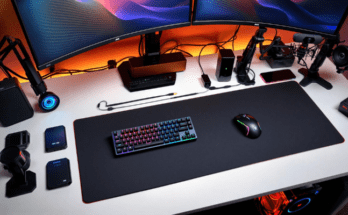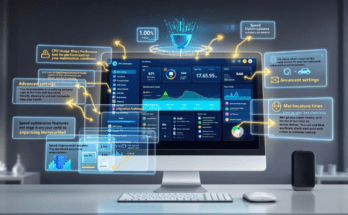Nowadays computers are already tools that have been around for many years, and they have changed work, communication and our existence in everyday life significantly. Words such as computers, microprocessors et cetera, have not always been taken to mean sophisticated calculating machines but this article captures the history of computing devices from simple mechanical calculators to the modern sleek and slim devices that are found in the market. In this article, readers will be taken through an interesting ride through the history of computers and the key points of significance that made it all possible.
1. From computational thinking to emerging educational research
Information and computation, the basis of the modern computing technologies, would go back in history to the prehistoric ages; they focused on this. The babylonians are the first people that used an abacus, the first computing device, around 3000 BC. This rudimentary counting frame which was preferred by users facilitated basic math computation by using beads moving on rods.
The last invention was the most unusual one; the Antikythera mechanism, an early Greek mechanism created circa 150 – 100 B.C. In the history of maths, it is an early way of an analog computer, which could calculate the positions of stars in the universe etc. and the astronomical cycles. Nevertheless, the Antikythera mechanism’s astonishing performances would have been lost from history for a very long time before its discovery in 1901.
Throughout the history, we were still trying to find more complex algorithms, and we developed in various areas. It was in the 17th century when Wilhelm Schickard created mechanical calculator and in 1642 when Pascal launched the world’s first digital calculator. These works laid the foundation which would lead to what we now call modern computers.
2. The Emergence of Electricity and The Coming of the Modern Computer
The advent of electricity changed the perception of mankind regarding computation in a way. In the 19th century, a British inventor named Charles Babbage created a principle for Difference engine, an advanced mechanical calculator that will calculate polynomial functions. Babbage had finished the project but his work showed what those programmable machines could be used for.
In 1936 a British mathematician Alan Turing came up with the idea on what theoretically computing is essentially mathematical formulae to calculate – called On computable numbers with an application to the Entscheidungsproblem. In the end he built an imaginary universal turing machine for everything. This work set the theoretical basis for the contemporary computer and also rendered a vast input in present days’ computer science and artificial intelligence.
3. The Beginnings of the Electronic Computers
Electronic computers were used in 1940s when design of Atanasoff-Berry Computer (ABC), unique and first electronic digital computer with digital binary and designed to solve system of linear equations. The consequences of this work led to development of far superior machinery that would be built later, for example the Colossus Mark 1, a device designed by British engineers during world war two for the purpose of deciphering codes.
Post war, a very important contributor to the topic of computing was a man by the name of John Von Neumann; he came up with a new concept for the computer that is in use to this day! Von Neumann architecture is a stored program computer where data and program instructions are stored in storage unit. This paradigm change permitted programmers to write good algorithms and higher than level languages emerged.
In the year 1945, John Presper Eckert and John Mauchly developed, what was first used as a general use electronic digital, computer, named ENIAC (Electronic Numerical Integrator And Comuter). It was able to compute mathematical problems akin to advanced calculations far much faster compared to mechanical computers. Another great achievement in the history of computer that simply paved the way for a more richer technological revolution was the successful operation of ENIAC.
4. The portable and cheaper computing
Together with the range of changes in the computer’s uses, the 1950s and particularly the 1960s marked the appearance of smaller, cheaper computers designed for multiple users. These early mainframe computers are seen to be the building block current multi user computing systems. COBOL a language especially for business calculation and FORTRAN the first high-level programming language intended for scientific calculations were developed during this time.
During the 1970s, what was known as a minicomputer emerged because of its cheap price and effectiveness. They were smaller computers used in engineering and health and other areas and forerunners to the personal computer.
Watch the invention of microprocessors during the 1970s for you know that was when the chips could do millions of instructions. Intel introduces first microprocessor for commercial use called the Intel 4004 in 1971 This then forms the basis of the microprocessor in global electronic products and further to the personal computer.
5. Type of computing and the internet The following are under the category of type of computing
The personal computer movement started around the end of the 1970s when systems such as the Apple II and the Commodore PET came on to the market. These machines brought computation into the homes, and created a new generation of computer geeks who would form the future of this business.
Later in 1981, the International Business Machine, commonly known as IBM released the IBM PC following an open architecture formula, in which other manufactures and developers could develop and produce relevant hardware and software as well. This helped set the ball rolling for the growth of PC industry and in general brought about standardisation of computing technology.
The 1990s can be specified as the time that experienced the creation of the Worldwide Web and the Internet as the means of communication, information exchange, and commerce. Thanks to the appearance of graphical web browsers like Mosaic and Netscape Navigator, the access to the network of interconnected WWWpages in a news feed became more convenient.
At the end of the 1990s with the bringing on of search engines such as the Google the ease and access to information through the world widest web began to change. They began to experience significant sales growth, and the number of Internet users determined the volume of online advertising to boost market growth and shift the focus of enterprises.
6. The Future of Computing
At the moment, computers are the working branches of our society, determining as well the way production, getting an education and communication works. We may say that there are future technologies that are yet to be developed and implemented in the world including the Artificial intelligence, the Quantum computing as well as the Internet of Things (IoT).
Computer technology advances occurring on the horizon are advancing to cause further improvements in our society given that more effective and substantive computers are on the horizon. It will develop new opportunities for growth and enhancement of human life in many spheres such as healthcare and education can be significantly enhanced, and global issues, including climate change or resource depletion, can be addressed through computing.
In their entirety, however, the computers history is a complete description of where the man driven by the inclination of progress can take. From the counting frame, to the pocket calculator, to computers, we now see ourselves closer to a world where there is no limit to information technology. As we continue to explore new frontiers in computing, one thing remains clear: the future of computers is not uncertain, its use is advancing and only increases in the future.



